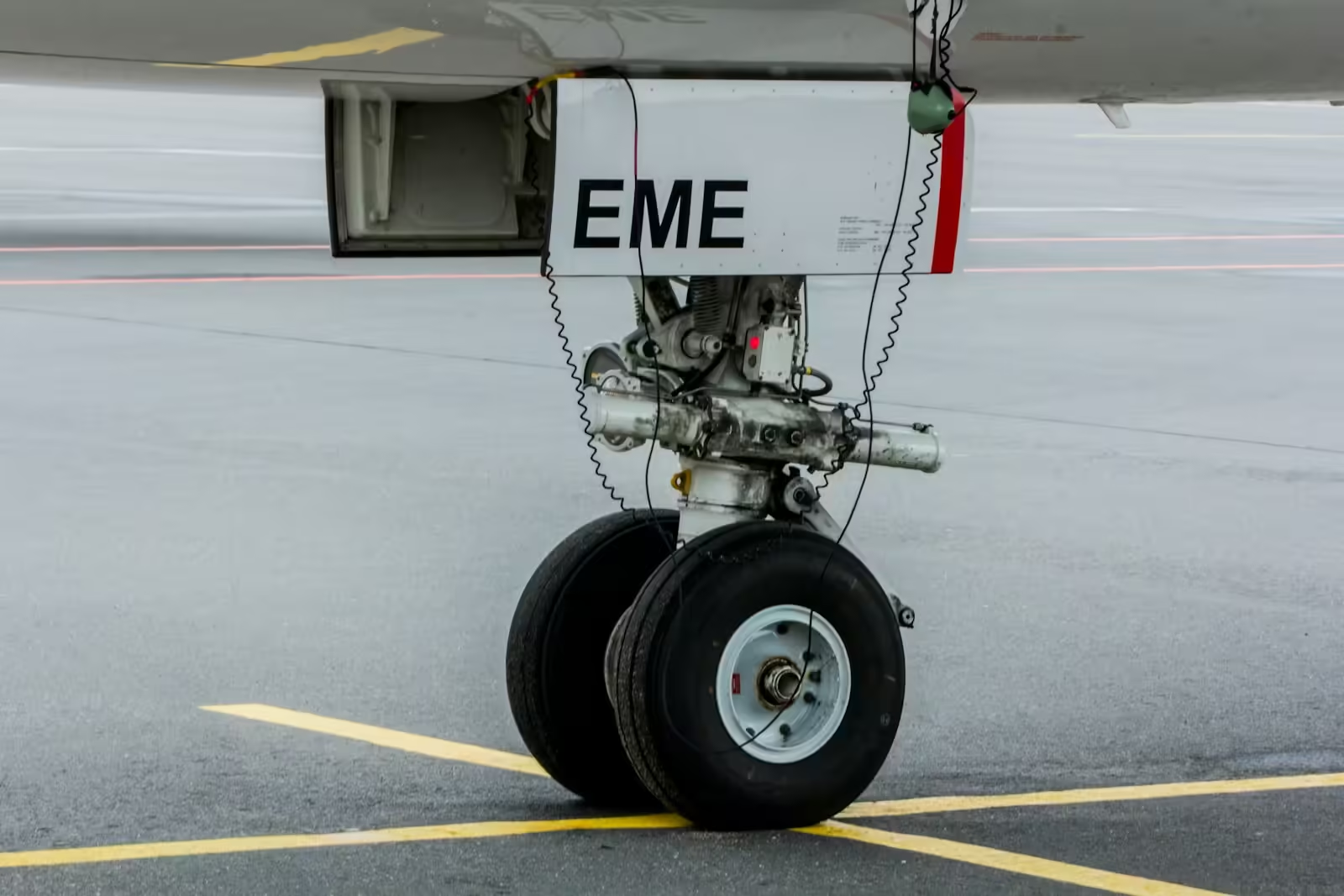
Table of Contents
- Commercial aircraft use a hydraulic retractable landing gear system, which raises and lowers the gear through sequential valves and down-locks.
- The forward retracting design reduces undue stress during high-speed deceleration and aids the gear’s ability to overcome air resistance during takeoff.
- As a fail-safe mechanism in the event of a hydraulic failure, the forward retraction design allows gravity expansion and reduces the possibility of collapse.
Modern commercial aircraft are equipped with hydraulic retractable landing gears. The retraction system utilizes pressurized hydraulic fluid to actuate various linkages to raise and lower the gear. When the pilot commands the landing gear in the “up” position, hydraulic fluid is directed into the gear line.
Fluid passes through a sequential valve and down-lock to the gear-actuating cylinder. The system includes an electric meter to measure fluid level and a hydraulic reservoir to hold excess fluid. Two limit switches—one for retraction and one for extension—are fitted to each gear.
The nose gear moves forward and backward in the fuselage of most commercial aircraft, while the main landing gear retracts sideways or backwards. Compared to the main landing gear, the nose gear is significantly smaller and has fewer wheels. Nose gear often does not have a braking system unlike the main gear. It features a fairly light gear arrangement and mechanism. Due to the increased aerodynamic drag during flight, it is more vulnerable to severe vibrations.
The choice to retract an aircraft’s nose wheels is influenced by a number of operational and mechanical considerations. One of the main reasons is the optimization of the interior space of the aircraft. The nose of the aircraft is where the avionics and other critical components are located, so designers can make more use of this space by moving the nose wheels back and forth. Additionally, by integrating more smoothly with the aircraft’s aerodynamics, it reduces forward retraction drag and increases fuel economy while in flight.
The forward retracting design
The forward-retracting nature of the aircraft during takeoff forces the gear to overcome air resistance. Since the air cart moves more slowly than before, this is easier to do. Aerodynamic force facilitates the downward movement of the gear when it is decelerated more rapidly, protecting it from undue stress. When stowing, a retractable design can be more advantageous. But during expansion, the inward pressure will put too much stress on the gear.
During takeoff, the aircraft moves back and forth, requiring gear to overcome air resistance. This is easier to do because the air cart goes much slower than before. When the gear is decelerating faster, aerodynamic forces make it easier to descend and protect against unnecessary stress. A retractable design can be more beneficial when stowing. However, the inward tension during expansion will overstress the gear.
The forward-retracting design creates significant mechanical stress on the nose gear system upon touchdown. When the gear system is locked in the low position, air resistance has little effect on it. The nose gear may collapse completely or the rear-retract locking system may be compromised by mechanical and aerodynamic stresses. It is interesting to note that many military aircraft include a locking knee and rear retractable nose gear system for additional structural support.
The forward retraction design takes advantage of the area in front of the fuselage to increase the amount of cargo capacity. The rear-retracting nose gear configuration used by the Russian Tupolev Tu154 and Tu134 takes up a large portion of the cargo area. Interestingly, the rear-retracting design, carried over from previous Russian aircraft, allowed the glass-nosed navigator to be installed directly below the cockpit.
READ | The history of tri-jets and rear-engined aircraft and how they got away


2 thoughts on “Why Retract Forward the Nose Wheels on Aircraft?”